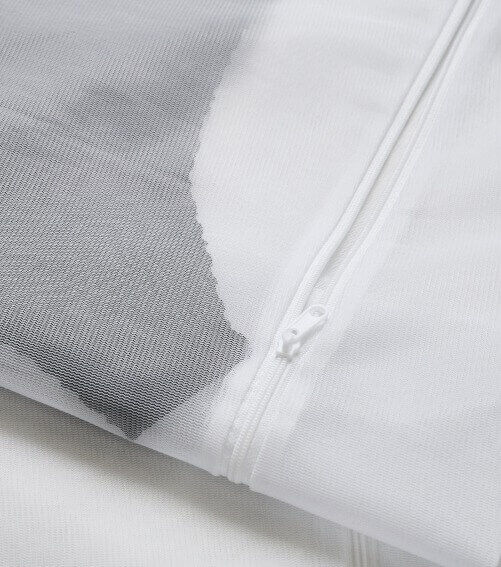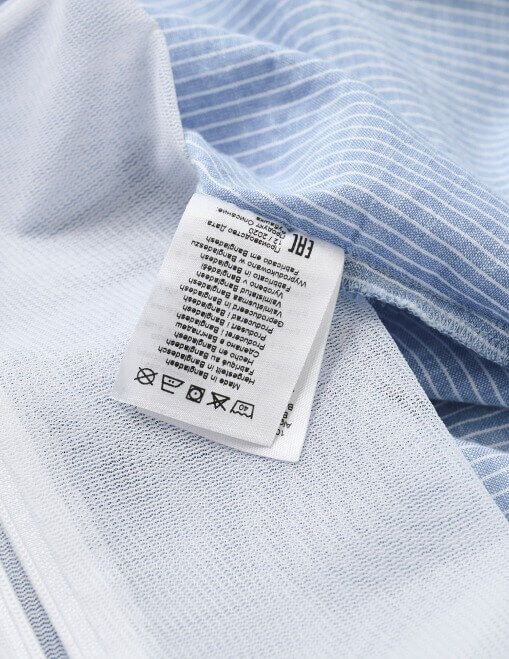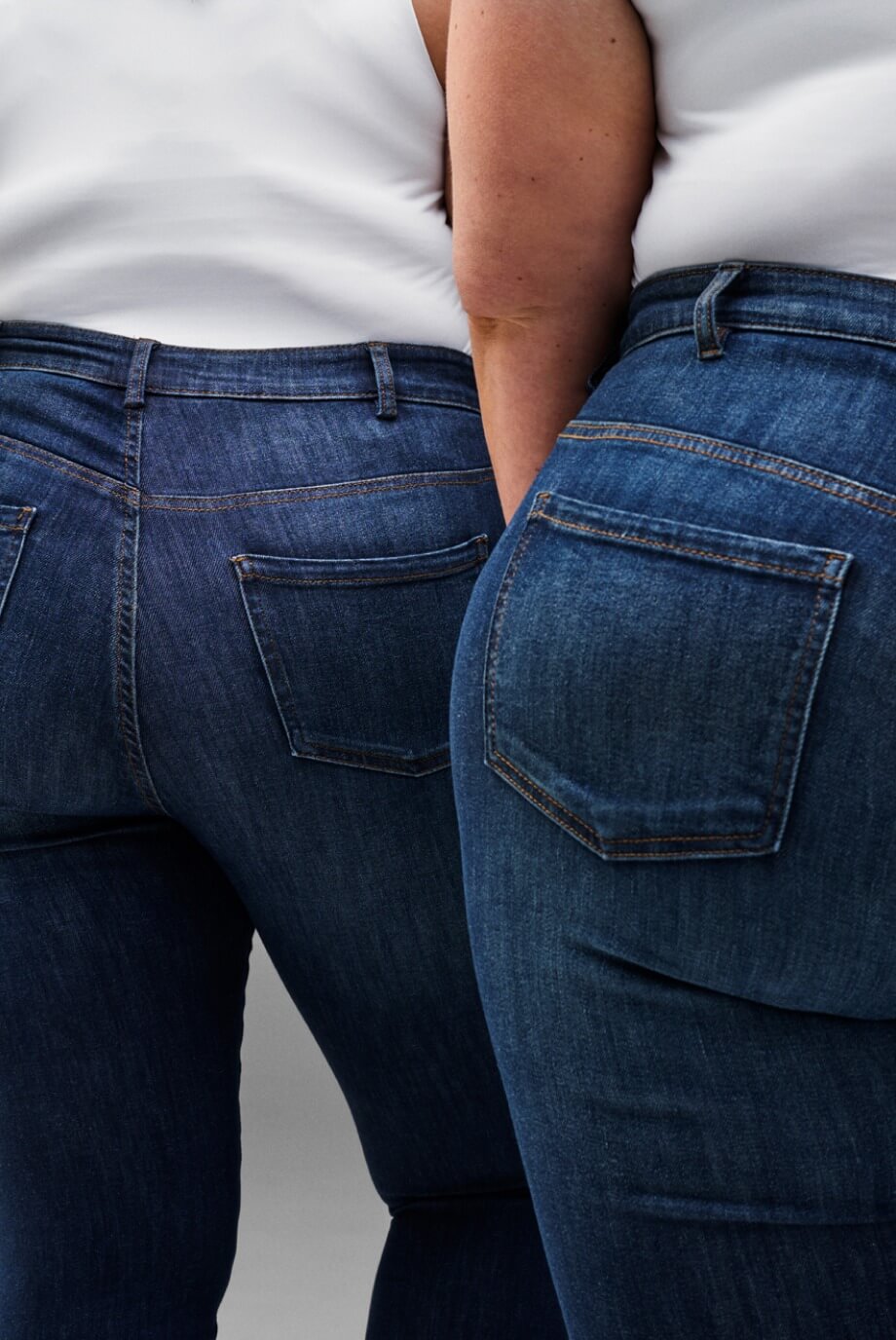
Extend the life of your favourite clothes
When you’ve made a great purchase and found that piece of clothing you want to wear again and again, it’s a good idea to take care of it so that it lasts for as long as possible.
Be especially careful when you wash and dry clothes. If you take care of the clothing based on the material it’s made of, there’s a higher chance you’ll be able to use it for a long time.
How should you wash your clothes?
There are many factors at play when washing clothes. Some clothes can be machine washed; others only hand washed. It depends primarily on the material(s) the clothing is made of, the dyes in the clothing as well as any beading, buttons or similar details. The best thing you can do when you wash your clothes is to follow the recommended washing instructions.
We’ll take a closer look at the different factors and clarify what you can do before, during and after washing your clothes to take care of them as well as possible.
The best conditions for a gentle wash
When it’s time to wash your clothes, there are some things you need to be aware of. It would be a shame to take the clothes out of the washing machine and find out they’ve been ruined because they weren’t washed correctly.
Start with assessing if it’s even necessary to wash all your clothes. Clothes become worn every time they’re washed, and it’s absolutely possible to wear clothes several times without needing to wash them. If you can wash just a few parts of your item or simply hang it up to air out, you can save it from unnecessary wear and tear, as well as reduce your impact on the environment.
Check the clothes’ washing symbols
If you want to be on the safe side when washing your clothes, you need to look at the washing instructions of your clothing. Here you’ll often see a row of symbols that indicates how high a temperature the clothes can withstand, whether they can be machine washed, how gentle the wash needs to be and more.
There are many different washing and dry-cleaning symbols, and we’ve put together a list of them all in our washing guide, where you can read more about each one.
No more stains
It’s never fun to spill something on your clothes or otherwise stain them. If you do have an accident, make sure to treat the stain before you wash the clothing. Stains are harder to remove after the first wash, and if it doesn’t go away, we all know where that piece of clothing will end up. After all, most of us don’t want to wear clothes with stains on them.
When you need to remove a stain, you can often do it by following these three simple steps:
1. Start by soaking your clothes straight away.
2. Apply some stain remover, detergent/powder or washing-up liquid and let it sit.
3. Wash the clothes as you normally would, preferably at 40 degrees to increase the chance that the stain will be removed.
Take the materials into account
It’s important to take into account what material your clothing is made of before you wash it. The durability of different materials varies a lot. Cotton is often easy to wash, so you don’t have to be nervous about ruining it. However, there are many other types of materials that you need to be especially aware of. Read about the most common ones below.
Silk
Silk is both beautiful and soft, but also hard to maintain. As a general rule, you should wash your silk clothing as little as possible. Sometimes, you can just steam it to remove any odours or creases, but if it needs a wash, it’s best to do it by hand. If you choose to wash it in a washing machine, it should be on the gentlest programme possible at low temperatures. Whether you wash it by hand or machine, you should use a detergent specifically for silk.
Wool
Like silk, wool is also a very delicate material that does not tolerate a lot of washing. You should therefore consider whether you can freshen up your wool clothing by steaming or hanging it to air out instead of washing. If you do wash your wool clothing, make sure to do so at a maximum temperature of 30 degrees on a wool or hand wash programme. Remember to also use a wool detergent or nothing at all.
An extra tip for taking care of your wool clothing and prolonging its life is to use a comb to gently remove any lint that appears when the clothes is used. That way, you can wear your favourite knitwear season after season.
Viscose
One of the most delicate materials is viscose, which has a high risk of shrinking or losing its shape. That's why it's important to use the washing machine's hand wash programme to wash your viscose clothes. You should also wash your clothes as cold as possible and never at more than 40 degrees.
Denim
Although denim is very durable, it doesn’t need to be washed too often. Sometimes it's sufficient to hang up your jeans while you're in the shower to let them steam or hang them outside to air them out. When washing your jeans or other denim clothing, it's best to give them a colder wash. Also, make sure they don't get too many turns so they wear out as little as possible. Similarly, it's a good idea to wash them inside out so they don't lose colour.
Retain colours
Coloured clothing is amazing and can give you a look with lots of personality. Therefore, it would be a shame if you couldn’t wear it for very long because of the colour fading.
Before you wash your favourite clothes alongside other clothes, it’s a good idea to wash it alone or with similar colours. It could be that there is some excess dye left that can bleed to other clothing the first time it’s washed.
Some dyed clothing can lose its colour when it comes into contact with water. Before you throw it into the wash, you can test the colour by rubbing a wet cotton swab on a part of the garment that’s not visible when worn. This could be a seam or the inside of a pocket.
If you take good care of your clothes before, during, and after a wash, there are almost no limits to how long clothes can last
Washing striped clothing
Washing striped or multi-coloured clothing can be challenging, because what other colours should you wash it with? You have to assume that the manufacturer has taken into account that the dyes have to be of a certain quality in order to ensure that the dyes in one part of the clothes don’t run off to another.
If you still want to stay on the safe side when you wash striped or patterned clothing, we recommend you start by soaking it in vinegar for an hour before you wash it the first time. This helps retain the colours. Afterwards, you can wash it for the first time, either by hand or alone in a washing machine. When you wash the clothing in the future , wash it with light colours.
Choose the best type of washing
It's largely down to the material and your washing machine whether you should wash your clothes by hand or can take a spin in the machine. As mentioned, some materials are very fragile, but many newer washing machines have washing programmes that take this into account, and in these cases, you can wash your clothes in the machine.
If you need to machine wash a bra or delicate clothes, you can use a laundry bag to avoid damaging your clothes. In addition to protecting your clothes, the laundry bag can also help you keep track of your clothes so you can easily separate them from other items.
We know that clothes, regardless of material, get worn every time they’re washed. Therefore, if there are no more than a few stains, try removing them by hand rather than putting everything in the washing machine.
Use the right temperatures
If you can, lower the temperature when you machine wash your clothes. It's not only good for your clothes, but it's also good for the environment. If you only wash your clothes at 30 degrees instead of 40, you'll save around 30% on energy consumption.
Some people worry that washing colder than usual won't get clothes properly clean, but that's not the case. Virtually all detergents and powders are designed to clean at a minimum of 30 degrees; however, if you wash at 15-20 degrees, be aware that special cold water detergents are needed to keep clothes clean in cold water.
Although many clothes can be washed at 30-40 degrees, some should be washed at 60 or 90 degrees. These include underwear, bedding, towels, dishcloths and so on. Bacteria and dust mites will only disappear if you wash at a minimum of 60 and preferably 80 degrees.
Be careful with detergents and fabric softener
Whether you wash with liquid or powdered detergent is a matter of personal preference. Whichever you choose, it’s important to follow the measurements on the packaging. This is based on the hardness of the water, the amount of laundry and how dirty the clothes are. This way, you can decide how much to use; but remember, using more detergent won’t make the clothes cleaner. On the contrary, you risk leaving soap residue on your clothes when you take them out of the washing machine.
The difference between liquid deterngent and powdered detergent, aside from form, is that bleach is often added to powdered detergent. This makes it the best choice for washing white clothing. Similarly, you can buy liquid detergent that is specifically designed for washing black clothing.
Fabric softener tends to be controversial. Either you like it or avoid using it. The benefits of fabric softener are that it softens your clothes, adds fragrance and removes static electricity. On the other hand, if you use fabric softener with sportswear, for example, you risk losing its sweat-wicking properties. At the same time, some think that fabric softener is unnecessary because it doesn’t clean your clothes, but often increases the risk of fragrance allergies.
Alternatives to detergents and fabric softeners
If you're not a fan of powdered or liquid detergent, there are alternatives that are better for the environment. However, opinions differ on whether they are as effective as the classic detergents.
A now popular alternative to detergent is soap berries, soap nuts, wash shells or wash nuts. In actuality, they are just different names for the same eco-friendly alternative. Soap berries come from the Sapindus Mukorossi tree, and it’s the shells of the berries that are used. They contain a substance called saponin, which foams when it comes into contact with water and should therefore clean clothes.
Laundry balls or laundry eggs are another environmentally friendly alternative to traditional detergents. When you wash clothes, you put the laundry ball/egg in the machine with the clothes. The ball or egg contains so-called washing tablets, which are pressed washing powder. When the clothes are washed, the tablets release soap. At the same time, the ball or egg has the effect of scrubbing the clothes.
If you want a substitute for fabric softener, you can use a little white vinegar. It may not sound like much, but your clothes won't smell of vinegar, and it’s said to keep the colour and prevent limescale from building up in your clothes. On the other hand, many people also think it's not worth using vinegar because it doesn't have the same effect as fabric softener and that using the wrong vinegar can be bad for your washing machine. Try to understand the functions of fabric softener and vinegar before deciding whether to use one or the other - or to perhaps skip both.
Good care makes for durable clothes
Looking after your plus-size clothes after they've been washed is just as important as washing them. For example, if you tumble dry your favourite knit, you can be sure it won't fit anymore. And if you iron your nice shirt at too high a temperature, it won't be the same either. Therefore, it's good to know how to treat your freshly washed clothes so you can use them again and again.
Avoid mistakes when drying
Some clothes can be tumble dried, but tumble drying your clothing also wears it out, so you run the risk of reducing its durability. It may also lose shape or shrink after several tumble-drying sessions.
It’s better for both the clothes and environment to let them air dry – either indoors or outdoors. You can dry clothes outside all year round. During winter, it just takes longer because it’s colder and the sun doesn’t shine as much as in the summer. On the other hand, you should also be aware that the sun can bleach your clothes, which can be avoided by turning it inside out.
When air-drying your clothes, be careful not to hang them on a hanger. If you do, you run the risk of stretching your clothes and letting them get out of shape – especially if it’s wet knitwear. Instead, lay your clothing flat, for example on a towel, and let it dry that way. If you use this method, remember to turn the clothing over a few times so that it dries on both sides.
Find the best technique for ironing
Ironing clothes is not just about laying the clothes on an ironing board and running the warm iron over. If you want to take care of your clothes, you should take some precautions to protect them as much as possible.
Perhaps you know the feeling of standing over the same crease for a long time because it just won’t smooth out. Dry clothes are harder to iron than damp clothing. Therefore, you can spray a little water on your clothing to make it easier. You can also choose to not dry your clothes completely after a wash so that you can iron them while they’re still damp.
When you iron clothes, turn the garment inside out. This is the most gentle on the clothing. If you iron the right side, you may get stains or colour changes if you use a temperature that’s too warm or too much water.
If you’re the type that irons in a circular motion, you’re far from alone, but it’s actually not the most optimal way to do it. You risk stretching the clothes and changing the shape by using a circular motion. Try instead to iron in straight movements.
How long do clothes last?
If you take good care of your clothes before, during, and after a wash, there are almost no limits to how long clothes can last. There’s a lot you can do to extend the life of your clothing, but if you stick to what the clothing label says, you’re well on your way.












